Before W.R. Coe commissioned Walker & Gillette to design the Main House at Planting Fields; he engaged the firm to design an Adirondack style lodge near Cody, Wyoming in 1913. In 1905 Coe made his first trip west to Montana and over the next five years a series of events led him to acquiring property. He went on a hunting trip in Wyoming with A.A. Anderson, was introduced to William “Buffalo Bill Cody” by Anderson at the Camp Fire Club, and by 1910 purchased Carter Ranch from Buffalo Bill. He later acquired many nearby ranches—amassing over 100,000 acres.
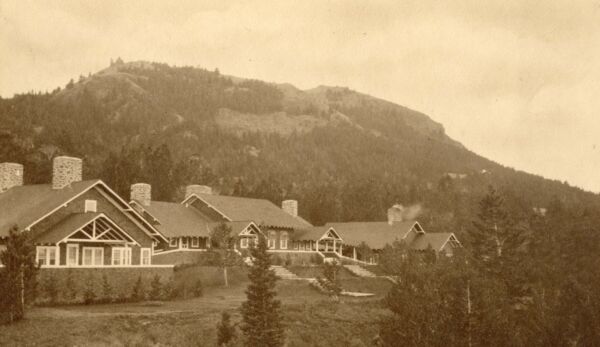
Coe lodge designed by Walker & Gillette, circa 1913
In 1940 a fire destroyed the lodge. Coe made immediate plans to rebuild and stated in a letter to his daughter Natalie that, “I have the old plans, but it will not be wise to rebuild identically; it was too much of a firetrap. The difficulty about the whole problem is there is only 80 feet of level ground on which the center of the lodge stood, and then it drops off sharply on each side.” Architect John Walter Wood—a colleague of Coe’s son Robert—was selected to design the new lodge. The new lodge is a simplified modern version of the Adirondack style original.
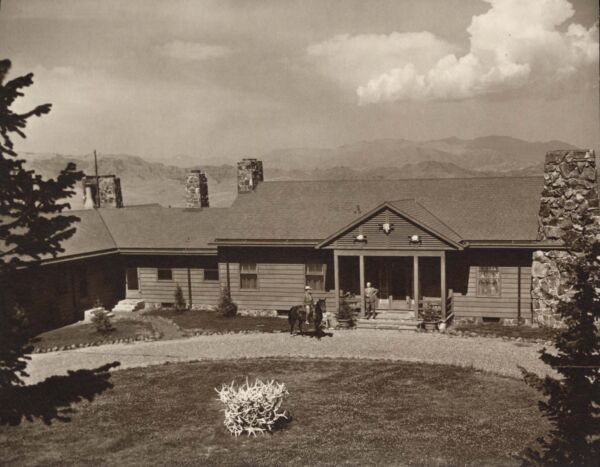
Coe lodge designed by John Walter Wood, circa 1940
In his other homes, Coe allotted one room to express his love for the American West: the Breakfast Room at Planting Fields and the gun room at Cherokee Plantation. The entirety of the lodge was decorated and furnished by Thomas Molesworth, who founded the Shoshone Furniture Company in Cody, Wyoming, where he became known for his “western Gothic” aesthetic. Molesworth studied at the Art Institute of Chicago, in 1908, during the height of the Arts and Crafts movement [i], which greatly influenced his designs. Prior to Coe, his first major commission was Rach A for Moses Anenberg in Beulah, Wyoming.
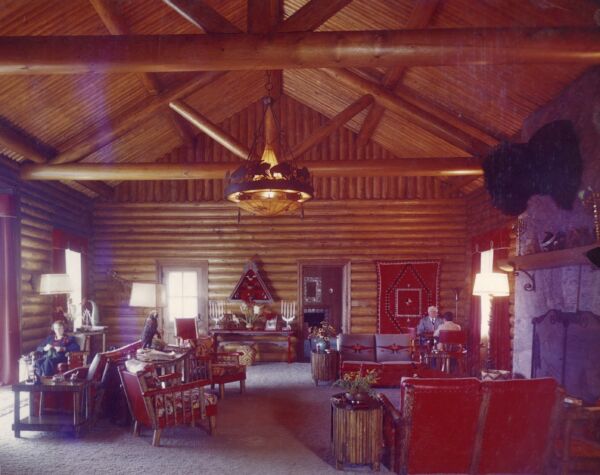 Caroline, W.R., and grandson Michael in the living room, circa 1940.
Caroline, W.R., and grandson Michael in the living room, circa 1940.
This living room design is a refined version—originally it included more trophy heads, and woven textiles hanging from the beams. Bright red club chairs, a bear lamp, decorative fire screens, and a chandelier depicting a romanticized western scene created the overall “rugged gentility” effect.
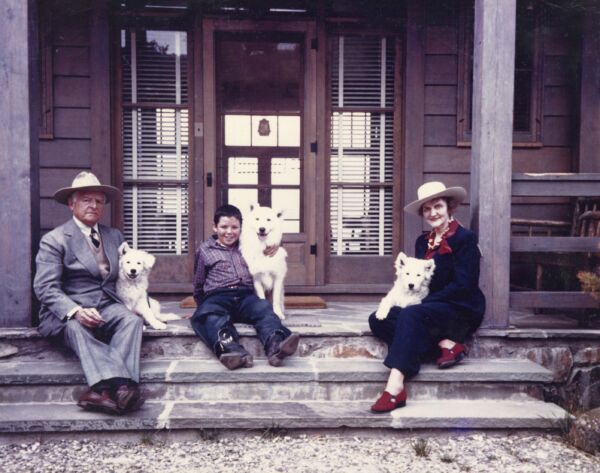
W.R., grandson Michael, and Caroline in front of the lodge, circa 1940
After W.R. Coe’s death in 1955, his son Robert Coe owned the house and spent many summers there, continuing the tradition he grew up with. Upon Robert’s death in 1985, he donated it to the Buffalo Bill Center of the West, who after brief ownership, sold it. Today, it is privately owned. Stay tuned for an upcoming post about W.R. Coe’s philanthropic efforts in Cody.
From Marie Penny, Michael D. Coe Archivist
[i] Winchell, T. (2005). Molesworth: The Pioneer of Western Design. Gibbs Smith.
Header Image Caption: Coe Lodge, circa 1940 overlooking Irma Lake, named after Buffalo Bill’s daughter

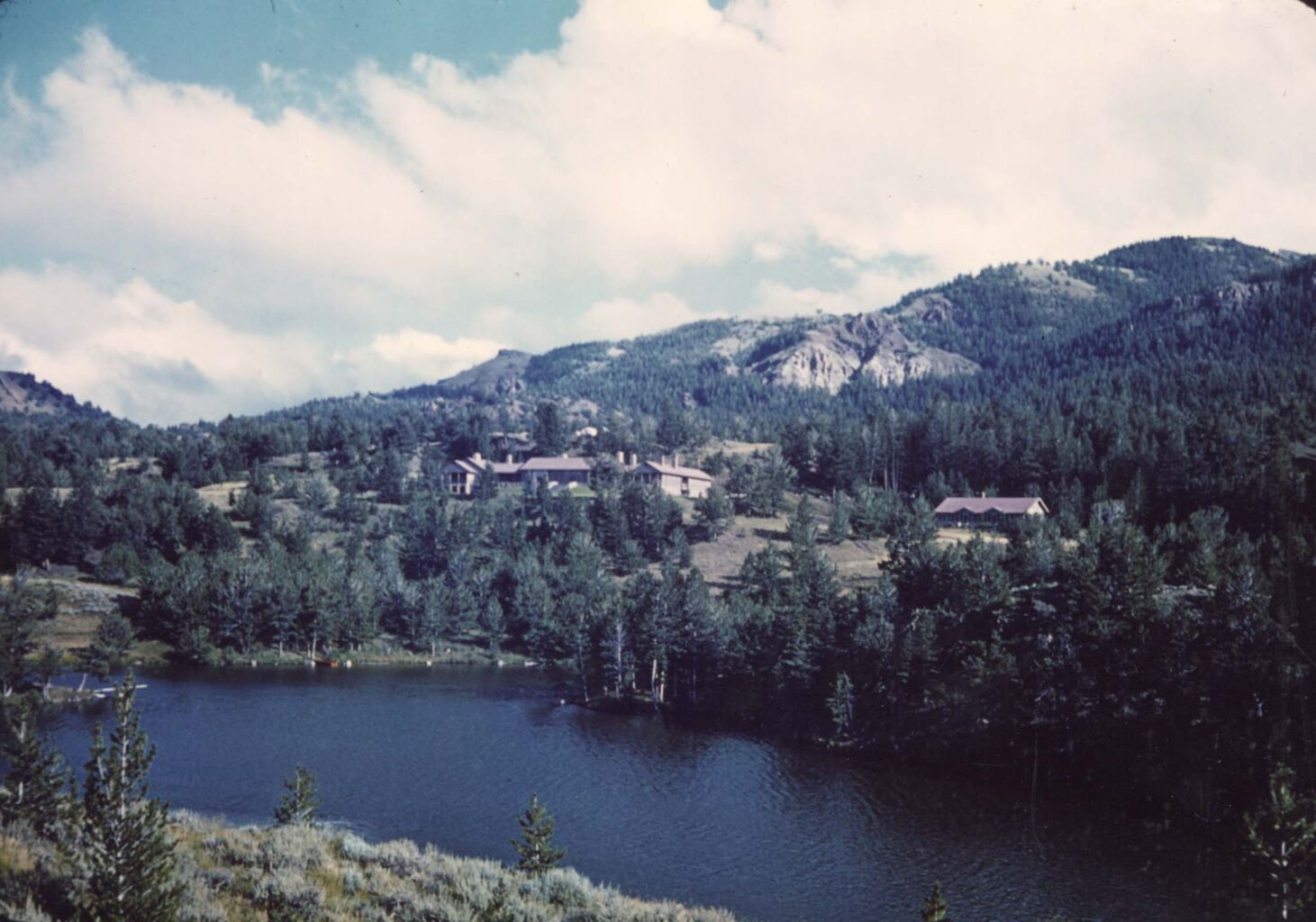
Great history, looks like a wonderful place to relax! A piece of trivia: until recently, it was owned by Bill Gates.